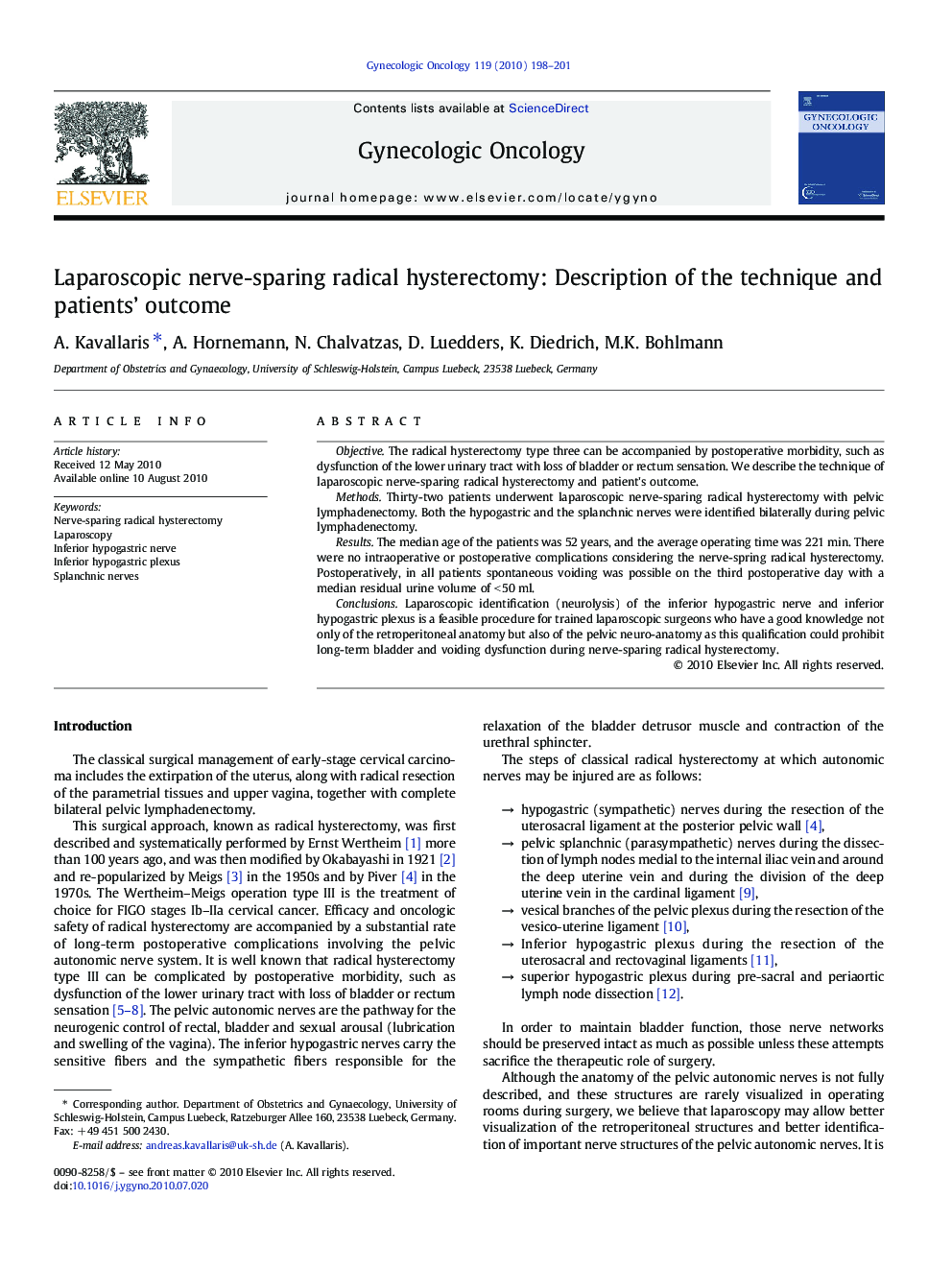| Article ID | Journal | Published Year | Pages | File Type |
|---|---|---|---|---|
| 3947315 | Gynecologic Oncology | 2010 | 4 Pages |
ObjectiveThe radical hysterectomy type three can be accompanied by postoperative morbidity, such as dysfunction of the lower urinary tract with loss of bladder or rectum sensation. We describe the technique of laparoscopic nerve-sparing radical hysterectomy and patient's outcome.MethodsThirty-two patients underwent laparoscopic nerve-sparing radical hysterectomy with pelvic lymphadenectomy. Both the hypogastric and the splanchnic nerves were identified bilaterally during pelvic lymphadenectomy.ResultsThe median age of the patients was 52 years, and the average operating time was 221 min. There were no intraoperative or postoperative complications considering the nerve-spring radical hysterectomy. Postoperatively, in all patients spontaneous voiding was possible on the third postoperative day with a median residual urine volume of < 50 ml.ConclusionsLaparoscopic identification (neurolysis) of the inferior hypogastric nerve and inferior hypogastric plexus is a feasible procedure for trained laparoscopic surgeons who have a good knowledge not only of the retroperitoneal anatomy but also of the pelvic neuro-anatomy as this qualification could prohibit long-term bladder and voiding dysfunction during nerve-sparing radical hysterectomy.
